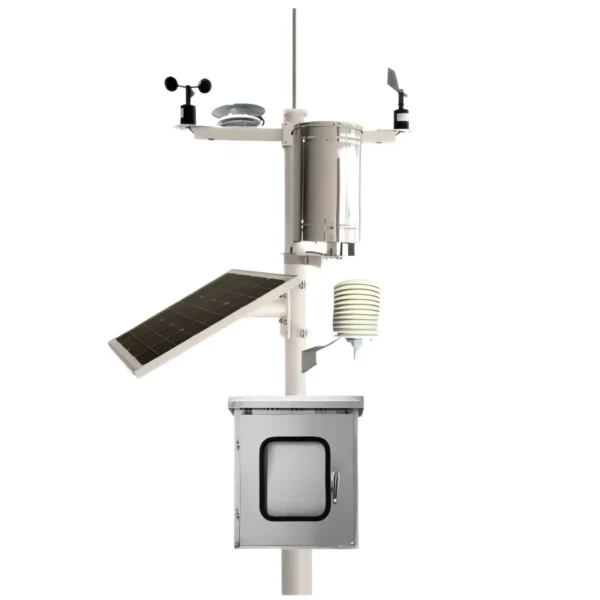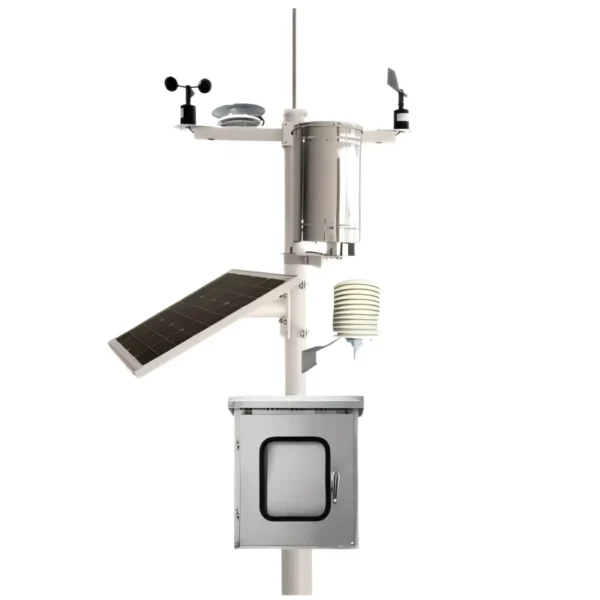Automatic Weather Station: Definition and Functionality

# Automatic Weather Station: Definition and Functionality
## What is an Automatic Weather Station?
An Automatic Weather Station (AWS) is a sophisticated system designed to collect and record meteorological data without the need for constant human intervention. These stations are equipped with various sensors that measure environmental parameters such as temperature, humidity, wind speed, wind direction, rainfall, and atmospheric pressure. The data collected by an AWS is typically transmitted to a central database or directly to users, providing real-time or near-real-time weather information.
## Components of an Automatic Weather Station
An AWS consists of several key components that work together to ensure accurate and reliable data collection:
– Sensors: These are the primary tools for measuring weather parameters. Common sensors include thermometers for temperature, hygrometers for humidity, anemometers for wind speed, wind vanes for wind direction, rain gauges for precipitation, and barometers for atmospheric pressure.
– Data Logger: This device records the data collected by the sensors. It can store data locally or transmit it to a remote location.
– Power Supply: AWS units are often powered by solar panels, batteries, or a combination of both to ensure continuous operation, especially in remote locations.
– Communication System: This system allows the AWS to send data to a central server or directly to users. Common communication methods include radio, satellite, and cellular networks.
– Mounting Structure: The sensors and other components are mounted on a sturdy structure, often a tower or mast, to ensure they are positioned correctly for accurate measurements.
## Functionality of an Automatic Weather Station
The primary function of an AWS is to provide accurate and timely weather data. This data is crucial for a variety of applications, including:
– Weather Forecasting: Meteorologists use data from AWS to predict weather patterns and issue forecasts.
– Agriculture: Farmers rely on AWS data to make informed decisions about planting, irrigation, and harvesting.
– Aviation: Airports use AWS to monitor weather conditions, ensuring safe takeoffs and landings.
– Environmental Monitoring: AWS data helps scientists track climate change and monitor environmental conditions.
– Disaster Management: Real-time weather data from AWS can be critical in predicting and responding to natural disasters such as hurricanes, floods, and wildfires.
## Advantages of Automatic Weather Stations
There are several advantages to using AWS over traditional manual weather stations:
– Continuous Monitoring: AWS can operate 24/7, providing a constant stream of data.
– Accuracy: Automated systems reduce the risk of human error, leading to more accurate measurements.
– Remote Access: Data can be accessed from anywhere, making it easier to monitor weather conditions in real-time.
– Cost-Effective: Once installed, AWS require minimal maintenance and can operate for extended periods without human intervention.
– Scalability: Multiple AWS can be deployed across a wide area to create a comprehensive weather monitoring network.
## Conclusion
Automatic Weather Stations play a vital role in modern meteorology and environmental monitoring. By providing accurate, real-time data, AWS help us better understand and predict weather patterns, support agricultural practices, ensure aviation safety, and respond to natural disasters. As technology continues to advance, the capabilities and applications of AWS are likely to expand, further enhancing our ability to monitor and respond to the ever-changing weather conditions.
Keyword: what is automatic weather station
